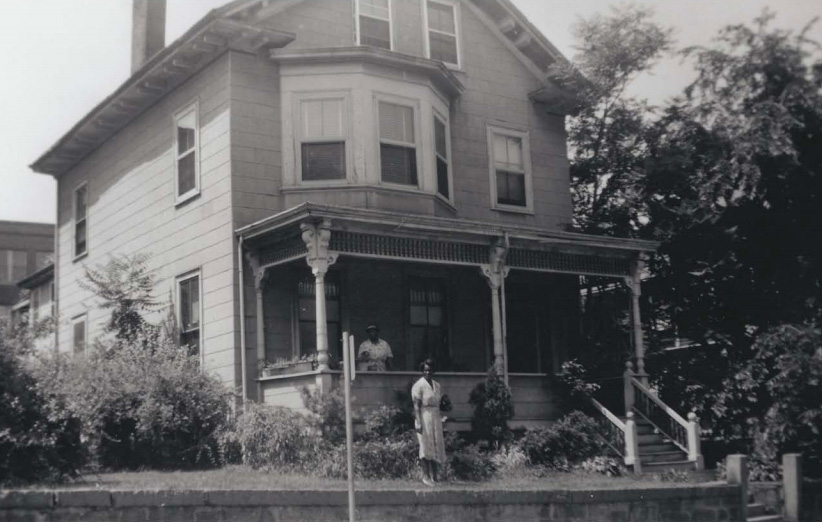Archaeologists to Dig at Malcolm X House Next Week

Ella Little-Collins and Sarah Little / Photo via the Boston Landmarks Commission, reproduced by Rodnell Collins
The City Archaeology Lab will begin its first dig of the year next week at the former home of Malcolm X in Roxbury.
Beginning Tuesday, March 29, the lab, the Fiske Center for Archaeological Research, members of the activist’s family, and Roxbury community members will grab their shovels. For two weeks, the crew will examine the yard at 72 Dale St., searching for any sort of look into the lives of Malcolm X and his half-sister, Ella Little-Collins, as well as artifacts that could reveal information about the home’s previous Irish owners.
“It’s not the oldest site by any means,” says City Archaeologist Joe Bagley. “But it could be an incredibly important site, even though it’s 60 to 70 years old.”
Bagley approached the home’s current owner, Rodnell Collins, about conducting a dig after Collins decided to do work on the foundation of the house. Collins is the son of Ella Little-Collins and the nephew of Malcolm X.
Before digging in, the first week of the project will be spent using ground-penetrating radar to determine spots to excavate. Then, Bagley hopes to piece together Collins’s oral history of the family with any artifacts found on the property. What does he hope to find?
“Personal items. Little tidbits,” says Bagley. “It’s really just kind of contributing whatever we find to what we already know from Rodnell. To see if we can add some more color to it. I don’t really know exactly what we’re going to find.”
Malcolm X was born Malcolm Little in Omaha, Nebraska on May 19, 1925. Throughout his life, he lived in various cities across the United States. He moved from Lansing, Michigan to Roxbury in 1941, and lived there on and off with Ella Little and her husband Kenneth Collins, until 1944.
A designated landmark, the Malcolm X – Ella Little-Collins House was built in 1874 (though the Little family did not inhabit the home until almost 70 years later.) It’s two-and-a-half story structure known as an “end house.” According to the Boston Landmarks Commission, an end house is a popular 19th-century style of house in New England. It’s characterized by a gabled front and a side-passage entry. A comprehensive history of the property was published in a report by the BLC in 1998.
“I think the most important part of the dig is the community involvement and working with the descendants of Malcolm X,” says Bagley.
The site is open to the public throughout the dig, which takes place March 29 through April 8. Bagley invites curious readers to stop by.

72 Dale St. / Photo via Boston Landmarks Commission, July 1998


